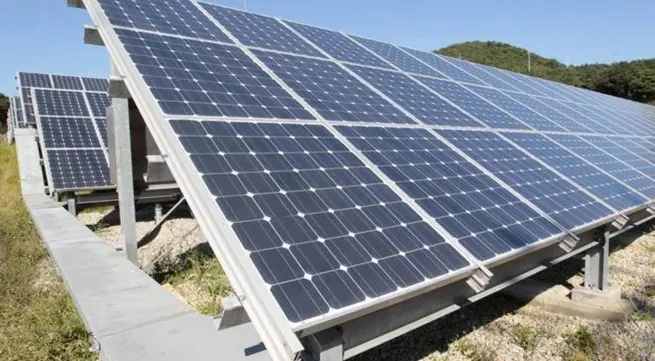Renewable energy capacity planned for great adding by governments in the next five years

India currently has a total renewable energy capacity of 169GW (as on 28 February 2023) with about 82GW at various stages of implementation and about 41GW under tendering stage. This includes 64GW solar power, 52GW hydropower, 42GW wind power, and about 11GW biopower.
India plans to double its renewable energy capacity to 500GW by adding 50GW capacity each year for the next five years, the Ministry of New and Renewable Energy (MNRE) said on Wednesday. The government will invite bids for 50GW capacity from the current fiscal year till fiscal 2027-28.
“These annual bids of ISTS (Inter-State Transmission) connected renewable energy capacity will also include setting up of wind power capacity of at least 10GW per annum,” the ministry said in a statement.
The plan, finalized by MNRE at a meeting chaired by Union Minister for Power & NRE R.K Singh last week, is in accordance with the Prime Minister’s announcement at COP26, of achieving 500GW of installed electricity capacity from non-fossil fuel (renewable energy + nuclear) sources by 2030.
“India has emerged as one of the world leaders in energy transition and this is evident in the growth that we have achieved in the area of renewable energy. We are committed to achieving 500GW of target by 2030 and the bidding trajectory will provide a further stimulus towards this.
This capacity addition is over and above the RE capacities that would come up under schemes like rooftop solar and PM-KUSUM of the ministry, under which, bids are issued directly by various states and also capacities that may come up under Open Access Rules, the ministry said.
Presently, Solar Energy Corporation of India Ltd (SECI), NTPC Ltd, and NHPC Ltd is notified by the government as Renewable Energy Implementing Agencies (REIAs) for calling such bids. It has been decided to also notify SJVN Ltd, a public sector enterprise under the Government of India, as a REIA.
The targeted bid capacity for FY24 would be allocated among the four REIAs. The REIAs would be permitted to bring out the bids for solar, wind, solar-wind hybrid, RTC RE power, and others – all with/ without storage, as per their assessment of the RE market or as per directions of the government, it added.
In Vietnam, the Ministry of Industry and Trade (MOIT) has planned to develop such a market since 2022. Under the plan, customers would be free to choose their electricity producers by 2024. Experts are urging lawmakers to issue a Law on Renewable Energy and Law on Energy Transition, as well as amend the Law on Bidding and Law on Prices, to lay the groundwork for the market.
By late 2022, 4,126 MW of wind energy and 16,545 MW of ground-mounted solar energy, accounting for 27 percent of domestic renewable energy capacity, have been connected to the national grid.
Before the expiration of Feed-in Tariffs, solar energy was purchased at a price of between 7.09 to 9.35 cents per kWh, and wind energy between 8.35 to 9.8 cents per kWh.
Solar and wind farms that failed to achieve commercial operation prior to the expiration will have to negotiate new tariffs with EVN by reference to ceiling prices.
The ceiling prices were set between 5.05 cents to 6.43 cents for solar projects, and between 6.77 cents to 7.75 cents for wind projects. Project developers said the price caps are lower than the old FITs and they are unable to operate profitably with such low caps.
In his meeting with Standard Chartered on February 9, Prime Minister Pham Minh Chinh requested the bank to offer financial products with preferential terms to green and renewable energy projects in Vietnam to support the country in its fight against climate change.
He also said that the country has developed its master plan for renewable energy, under which the energy is expected to drive down electricity prices to the level of other power sources.
Tags:





